License Agreement Templates
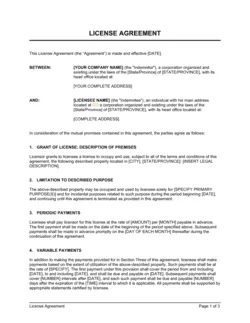
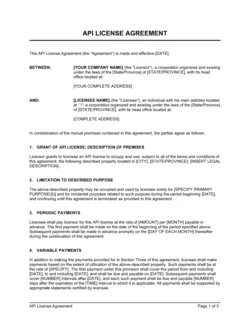

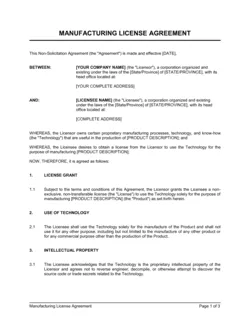
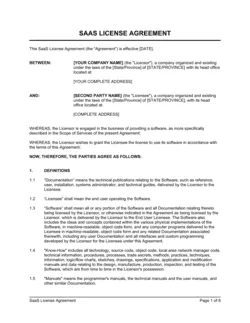
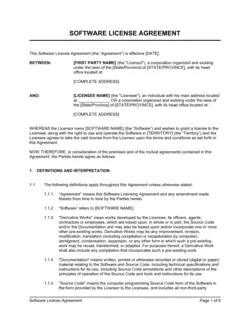
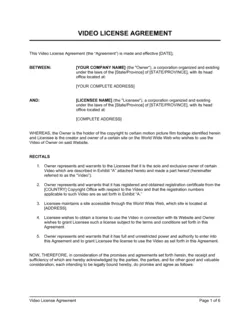
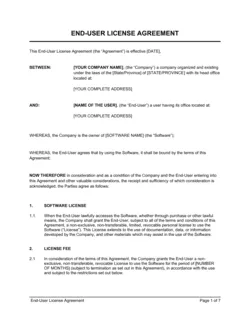
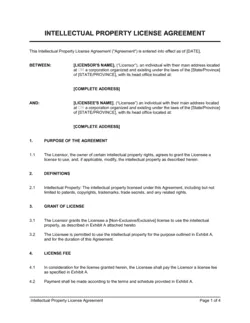
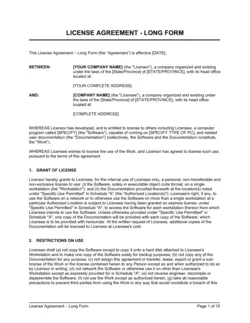
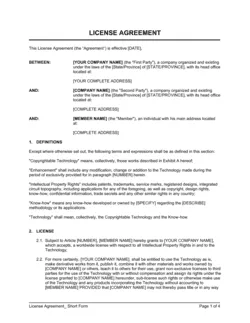
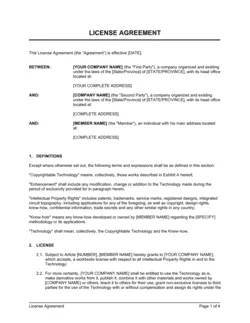
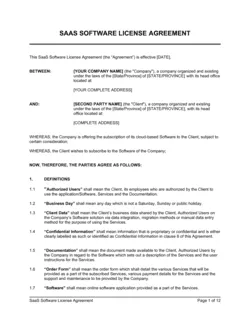
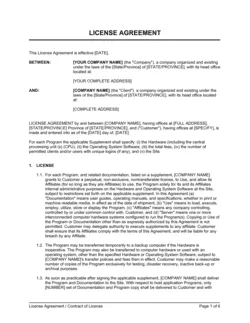
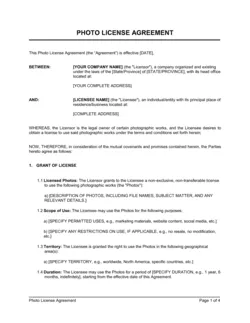
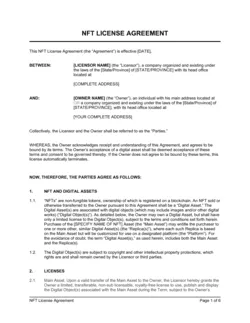
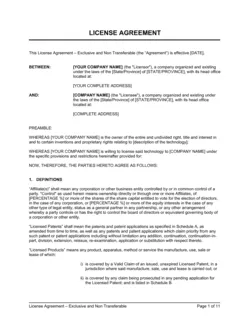
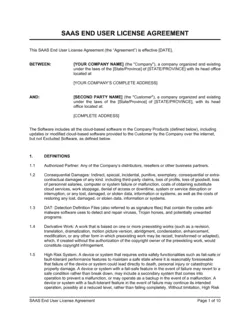
License Agreements: A Comprehensive Guide
Are you equipped with the right licensing agreement tools to run your business or protect your content?
If yes, you are good to go. If no, consider yourself fortunate to access this guide.
Have a go through this guide to explore what licensing agreements are, how legally beneficial they are, and how hassle-free your life will be if you avail them before opting to run any venture.
Take advantage from the amazing licensing agreement templates from Business-in-a-Box, and you will be all set to explore the corporate world.
What is a licensing agreement?
Licensing agreements are part and parcel of every business venture you are opting to start. The main purpose of having these agreements is to define and outline the boundaries following dealing with the private property rights of a business. If there is a lack of such agreements in the physical form, it is easy to cause copyright infringement of the content belonging to any person and their work. This is especially true in the case of writers, artists, and patent owners. Licensing agreements, through the complex for a common man, serve the purpose of protection of the copyrights of any content, product, idea, or business belonging solely to its owner.
The licensing agreement can be defined as a written form of a contract that is signed between two parties. The licensee is the one who is taking or buying the ownership of rights of property, product, or idea from a licensor for a specific period. The ownership or buying of the rights could be in full, which means that the licensee will solely hold the complete rights of the property for a lifetime while in case of a partial agreement, the period as well as the right are partial and have a specified time limit. The licensing agreement is needed for variable processes, including the production or manufacturing of a product, establishing a logo for a company, innovation of any new product or technology, or taking permission for using a patent of any product or technology which is owned by the owner or licensor. Without a licensing agreement, usage of any of the above-mentioned subjects leads to copyright infringement and might land you in legal trouble.
How does it work?
Certain Royalty terms are put to practice on the written licensing agreement. The licensee or buyer has to agree to those conditions, the minimum number set by the licensor, to effectively make use of the private property of the owner. These royalties can be in the form of shared revenues, which could go up to 4-10% or more in many cases. Royalties are paid by the licensee to the licensor. The time frame plays a key role in the establishment of the licensing agreement. As soon as the period is over, the renewal of the license is needed. In case if it is not taken, the right of the property is reverted to the licensor. In many cases of the full ownership of the licensing agreement, the licensee needs no renewal of the agreement and has a permanent license of the property.
Since a lot of complexity comes with a licensing agreement, both the licensor and the licensee have to consider every aspect of the agreement. There are restrictions standards set by the licensor on the property. It is the responsibility of the licensee to fulfill those restrictions. The royalty rates, the time frame and the payments, are some of the aspects which are determined by the licensor.
Major pitfalls you need to avoid in licensing agreements
Licensing agreements are based on the terms and conditions in the royalties. Any manipulation in words of those clauses can cause a big dent in your money. No matter if you are a licensor of a product or service or a licensee availing those products, there are three important considerations to ensure that you don’t get ripped off your profits in the name of royalties.
1. Nets sales
It is one of the most influential considerations in making the licensing contract. Nets sales determine the royalties which will be gone to the licensor. It can be defined as the elements, including the profit returns, allowances, and discounts that are not included in royalty.
Therefore, the licensor and the licensee must be aware of this term and its meaning. Both parties have to understand the amount of money deducted in net sales while considering the specified percentage gained on gross sales. It is important to know what elements are not a part of the net sales. If any party is not aware of it, a significant amount of money can be lost. Auditing this will lead to financial and legal consequences, including income, payments, and tax frauds.
2. Royalties and definite payments
To estimate the royalties, consider multiplying the royalty rate with net sales. A specific percentage of the net sales have to be paid by the licensee to the licensor in the name of the royalty rates. They can be paid through the modes of inter-company as well as using the third-party channels.
Minimums or Guaranteed periodic royalty payments are taken based on the average net sales. With Business-in-a-Box, you will be able to ensure that you get the licensing agreements with the transparent and verified royalty clauses.
3. Quality control and compliance
Our experts have paid a special focus on the quality control and compliance aspect of the licensing agreements. This holds significance to the licensor since if the quality of the product is not as per the quality standards, it won’t be approved for business. It is a part of the test protocol of every license which complies with the industry to which the product belongs. Breaches in quality standards will lead to legal consequences against both licensor and licensee.
4. Restriction and end-users
Always put special focus on the restrictions set by the licensor on the intellectual property as well as the end-users to make sure that you have the right access to sell the series to third party consumers without any copyright infringement.
Types of licensing agreement
With Business-in-a-Box, you will be availing all sorts of licensing agreement templates to fulfill any sort of corporate needs. Many types of licensing agreements are in use in the corporate world. Business-in-a-Box offers the templates for the ones given below.
1. License Agreement (Long Form)
This is a 12 pages long license agreement between the licensor and the licensee. These legal agreements allow personal, non-transferable, and non-exclusive access to the licensor to use the services. Services include products like software or apps which the license can access for a specific time. Any third party infringement on the part of the licensor is applicable to be held against him in the court of law. Any infringement to the product, such as software by the licensor, is also not allowed and is a part of the criminal conduct as per the clauses of the agreement.
2. License Agreement (Short Form)
This license agreement is a legal contract allowing licensors to have complete or full rights to the technologies and elements, including patents, products, content, etc. With this 4 page form, the licensee is provided with the condition of using the license to use the services as non-exclusive, for sale to third parties and corporate purpose. The license includes clauses for the royalty payments, which can be modified as per the needs of the licensor. Sole and complete ownership of the services is offered for an indefinite period in this agreement.
3. Patent License Agreement
One of the most significant license agreements in the corporate world right is the Patent License Agreement. At Business-in-a-Box, special focus has been laid on this type of license agreement, allowing licensees to avail license for the patents of products and services from the licensor without worrying much about the net sales and royalty payments. In this 4-page license agreement, the licensor clearly states he is the sole owner of the patent. Any modifications in the patent are owned by the licensor. The royalty payment is given in a separate section to provide a clear and transparent view for both licensor and licensee to negotiate these payments. The agreement is only granted to one licensee. Any infringing in the patent on the part of the buyer is punishable in the court of law.
4. Trademark and Royalty Agreements
This 12-page Trademark and royalty agreement from Business-in-a-Box is composed of all the essentials of a complete licensing agreement used for full and partial rights buying of a service or product. The agreement entails full details about the services or the products which are being licensed to the licensee and the period from which it will be applicable. Alongside that, the details about the services, especially the features which are fully licensed and which are under restrictions as well as the geographical regions in which the license is applicable, are also enlisted in detail, which can be effectively edited by the licensor as per his own needs.
The license is composed of the royalty payments clauses as well as the time frame, which can be edited by the licensor as per the needs of their license.
5. Trademark License (Long Form)
Although nine pages long, this Trademark license from Business-in-a-Box is based on the complete ownership of the patent or trademark by the licensee granted by the licensor by setting a specific amount for the sale of the intellectual property. All of the property and assets of the intellectual property are sold as per this agreement. The licensee can use these agreements to use the property for third party use, sale, and corporate matters. Any modification in the patent is possible once the sole owner is brought by the licensee from the licensor.
6. License Agreement Exclusive and Non-Transferable Right Template
This exclusive license agreement from Business-in-a-Box is a complete package for exclusive and non-transferable rights of a patent or trademark licensed to a licensee for a specific period of time. The specific provision and restrictions which the licensor want to entail on the license can be incorporated effectively in the agreement. If you’re looking to partially license your patent to a company, you can easily add the period, the restrictions on the patent, the licensed features and the royalty payments in the agreements. This 11-page customizable agreement can be effectively customized from the Business-in-a-Box.
7. OEM Distribution and License Agreement
This 18 pages customizable OEM Distribution and License agreement from Business-in-a-Box allows the licensor to partner up with a manufacturing or distribution company. In this agreement, specific clauses are included allowing the Second party, which could be a manufacturing or distribution company, to purchase rights of the intellectual property but to the degree of manufacturing or distribution only. The agreement addressed the royalty payments the days of the calendar year for which the license is valid and specific restrictions and limitations set by the licensor who is the 1st party. The 2nd party is a licensee in this case.
8. License Agreement Worldwide License
Business-in-a-Box offers the License Agreement Worldwide License Template which is a 4-page form allowing the business users to avail worldwide license of a patent, service, or technology for a specific period of time and royalty payments. This customizable template will allow the licensors to make amendments as per their intellectual property, the time frame of the license, and the royalty payments set, especially for the intellectual property.
Make your business goals a reality with access to over 2,000 customizable templates when you sign up to Business‑in‑a‑Box. Sign up and get access to over 2,000 templates, which are just one click away from you. Business-in-a-Box will fix your licensing needs right up.


